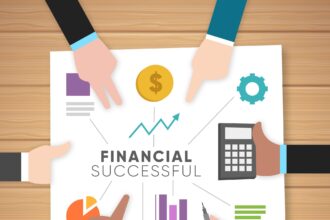
To build a resilient business, you should focus on adaptability, proactive risk management, and sustainability.
Start by embedding adaptability into all operations and use predictive analytics to anticipate disruptions. Develop comprehensive risk mitigation strategies to identify and address potential threats while ensuring business continuity through structured contingency plans.
Prioritize transparency, stakeholder trust, and innovative practices that prepare your business for unexpected challenges such as market volatility and natural disasters.
Incorporate sustainability in product development, supply chain management, and corporate governance by adopting practices that reduce environmental impact and support social responsibility.
By engaging diverse stakeholders—such as investors, customers, and regulatory bodies—and leveraging robust frameworks like the Task Force on Climate-Related Financial Disclosures (TCFD), you'll enhance your capability to thrive in any environment.
Interested in uncovering more practical strategies and best practices for building resilience?
Understanding Business Resilience
Understanding business resilience begins with recognizing its critical role in ensuring long-term survival and success.
In today's rapidly changing economic landscape, business resilience isn't just a buzzword; it's a key component of a company's ability to thrive. Imagine you've built an innovative product, but without a resilient supply chain, one economic disruption—such as a sudden market shift or supply chain interruption—could collapse your entire operation.
It's crucial to focus on resilience to stay competitive. Business leaders and industry experts are increasingly aware that integrating resilient practices into their business strategies can make a world of difference during disruptions.
Resilient businesses excel not just because they can withstand shocks like financial downturns or cyber-attacks, but because they adapt and grow stronger from them.
Though business resilience is rarely taught in management programs at leading business schools, its importance can't be overstated. Traditional metrics like stock price volatility often serve as indirect proxies for resilience, but these don't capture the full picture.
You must develop a comprehensive approach that identifies potential threats—such as economic, technological, and environmental risks—and builds robust strategies to mitigate them, ensuring long-term business continuity and growth.
Defining Resilience Criticality
Recognizing the paramount importance of resilience, let's define what makes it critical for business survival and growth.
Resilience means your business can withstand challenges and bounce back stronger. It's not just about survival; it's about thriving in the face of adversity.
Business resilience plays a crucial role in navigating risks that can come from anywhere—economic downturns, natural disasters, or supply chain disruptions.
Picture this: Your supply chains falter due to a sudden economic upheaval. Without a robust strategy, you're left scrambling.
Enter risk management and scenario planning. These tools aren't just boxes to check; they're lifelines. By anticipating various scenarios and preparing for them, you increase your ability to respond swiftly and effectively.
Scenario planning involves mapping out potential challenges and brainstorming solutions. This proactive approach ensures you're not caught off guard when disruptions occur.
Resilience means having the foresight and flexibility to adapt to change without missing a beat.
Ultimately, defining resilience criticality is about recognizing that how well you prepare for and manage risks determines your long-term success. It's about being adaptable, innovative, and always ready for the unexpected curveballs life may throw your way.
Characteristics of Resilient Businesses
Resilient businesses thrive by embedding adaptability in every aspect of their operations, from boardroom decisions in the corporate governance structure to community engagement through corporate social responsibility (CSR) initiatives.
You'll find that a resilient business doesn't just react to changes; it anticipates and prepares for them by leveraging predictive analytics and scenario planning. By integrating a proactive approach to resilience, they consistently adapt to changing circumstances, whether it's tweaking business models or strengthening the global supply chain.
Being visionary and practical is paramount. Innovating products to use fewer natural resources rather than just securing more supplies showcases this principle. This forward-thinking approach not only conserves resources but also proves your license to operate in markets focused on sustainability and environmental consciousness.
Moreover, resilient businesses set themselves apart by prioritizing human rights and sustainable development goals (SDGs). They don't just focus on their internal frameworks but extend their resilience to their supplier networks too. Investing in your suppliers to improve their practices can incentivize them to create fairer workplaces, thereby enhancing your entire supply chain's strength.
Additionally, transparency and accountability are in the DNA of resilient businesses. Embracing these values helps build stakeholder trust and contributes to thriving societies. Balancing short-term objectives with long-term goals while embedding a culture of resilience ensures that your business can face economic uncertainties head-on.
Overcoming Challenges
When overcoming challenges, businesses need to adopt a proactive approach to identifying and mitigating potential risks like supply chain disruptions, extreme weather events, and economic downturns. Understanding the necessity of resilience is the first step. You can't afford to wait until a crisis hits; instead, anticipate possible scenarios and prepare accordingly.
Assessing and managing climate risks should be high on your list. Climate change isn't a future issue—it's happening now, impacting operations and supply chains. By proactively adapting to these risks, you'll set your business up for sustainable success.
Implementing a comprehensive resilience measurement framework is crucial since conventional metrics like stock price volatility don't capture the full scope of vulnerabilities your business might face.
Innovate and adapt continuously. Stay informed by subscribing to insights that spotlight critical issues affecting global businesses. Innovation flourishes in a culture of adaptability.
Embrace circular business models like product-as-a-service and industrial symbiosis. Form partnerships with organizations such as the United Nations Global Compact and World Business Council for Sustainable Development that drive sustainability and innovation. This approach not only fortifies your business against current risks but also ensures flexibility to pivot in the face of new challenges.
Implementing Key Strategies
To build resilience, your business must implement key strategies that address governance, financial capital, natural capital, product development, supply chains, and public policy initiatives.
For governance, diversify your board composition and activities while reducing the earnings gap between executive and non-executive employees. This ensures balanced decision-making and aligns leadership with long-term resilience goals.
Focus on financial capital by assessing transition risks and strategically aligning investments. Test them against science-based targets using the Task Force on Climate-related Financial Disclosures (TCFD) framework.
When planning built environment investments, prioritize human rights and climate principles, thus future-proofing your operations.
Incorporate societal and environmental perspectives into product development and always be ready to pivot based on structural changes in consumer demands. This will keep your offerings relevant and desirable in an evolving market.
Supply chains require identifying key suppliers and forging collaborative solutions to ensure continuity. Invest in your suppliers and champion ambitious Diversity, Equity, and Inclusion (DEI) initiatives to create a robust, inclusive ecosystem.
Your public policy engagement should shift to advocate for stringent listing requirements and robust reporting models.
Direct your financial capital towards future-fit activities that support sustainability and innovation, securing your business's long-term success.
Measuring and Managing Resilience
How do you ensure your business is prepared to withstand disruptions and bounce back stronger?
Start by measuring resilience using both quantitative and qualitative metrics. There isn't a standard framework, but you can adopt a multifaceted approach.
Many companies use indirect proxies, such as stock price volatility, to gauge resilience, but you'll need more comprehensive tools.
First, identify and assess potential risks and vulnerabilities. Employ analytical tools that can estimate both current and future risks, enabling you to develop tailored strategies.
For example, consider revising your capital planning processes or restructuring your supply chain to better adapt to identified risks such as cyber threats or geopolitical instability.
Leading by example, Southern California Edison, an electric utility company, has proactively managed climate risks to its power grid in the state of California.
By implementing advanced technologies and adopting risk mitigation measures, they've reduced wildfire risk by about 70% compared to pre-2018 levels.
This showcases how proactive measures can significantly enhance resilience.
Integrating Sustainability Initiatives
Integrating Sustainability Initiatives
Building a resilient business in today's evolving landscape requires integrating sustainability initiatives into your strategies, carefully considering environmental, social, and governance (ESG) implications to reduce risks and unlock new opportunities.
Start by embedding sustainability into product development, supply chain management, and overall operations. Frameworks like the Task Force on Climate-Related Financial Disclosures (TCFD) and the Natural Capital Protocol can guide you in minimizing climate-related risks effectively.
By adopting sustainable practices, you not only reduce operational costs but also enhance your brand's reputation. For instance, Southern California Edison significantly cut wildfire risk through proactive capital investments in improved infrastructure and vegetation management, thereby boosting their resilience.
Such strategic moves not only protect the environment but also drive long-term value creation for stakeholders. For successful integration, take a systemic approach. Engage diverse stakeholders, including employees, customers, investors, and regulatory bodies, in your sustainability journey, ensuring transparency and accountability at each step.
This involvement fosters innovation and uncovers new market opportunities, all while building a robust and responsible business model. Ultimately, embedding sustainability into your strategy isn't just about meeting current regulatory and market demands; it's about future-proofing your business.
Reducing environmental impact, addressing social implications, and adhering to governance standards create a resilient foundation that withstands market turbulence while garnering trust and loyalty from informed consumers and investors alike.
Frequently Asked Questions
What Are Resilience Strategies Business?
You're asking about resilience strategies in business. Focus on adaptability, diversify revenue streams, invest in innovation, and foster strong relationships. Additionally, leverage data analytics to anticipate disruptions, and continuously assess risks through comprehensive risk management frameworks. By integrating these strategies, businesses can stay ahead and thrive in any situation.
How to Build Resilience in Your Business?
You'll bolster your business's resilience by identifying industry-specific risks, diversifying your board of directors, adopting integrated thinking frameworks, and fostering a culture of corporate sustainability. Focus on upholding human rights, ensuring operational transparency, and implementing climate change adaptation strategies to stay ahead in a dynamic market.
What Is a Good Strategy for Building Resilience?
To build resilience, diversify your business offerings and explore new markets such as emerging economies and niche segments. Embrace comprehensive financial planning by maintaining healthy cash reserves and developing strategic risk management strategies. Invest in continuous upskilling and reskilling programs for employees to enhance adaptability. Leverage cutting-edge technology solutions like Artificial Intelligence (AI) and Internet of Things (IoT) to streamline operations. Prioritize customer feedback by implementing advanced Customer Relationship Management (CRM) systems to drive innovation and foster customer loyalty.
What Are Resilient Business Models?
Resilient business models adapt quickly to evolving market conditions and integrate sustainability practices, diversify revenue streams, manage cash flow effectively, and maintain robust supplier relationships. By adopting such models, enterprises can gain a competitive advantage, boost innovation, and foster long-term trust among stakeholders.
Conclusion
You've got the roadmap to make your business resilient.
By understanding what business resilience means, recognizing its criticality, and embracing essential characteristics, you can overcome challenges and implement key strategies such as risk management and agile methodologies.
Keep measuring your progress with key performance indicators (KPIs) and don't forget to integrate sustainability initiatives like renewable energy and eco-friendly practices.
This proactive approach ensures your business not only survives economic downturns, natural disasters, and competitive pressures but thrives, no matter what comes your way.
Stay adaptable, stay prepared, and watch your business flourish in various market conditions.






